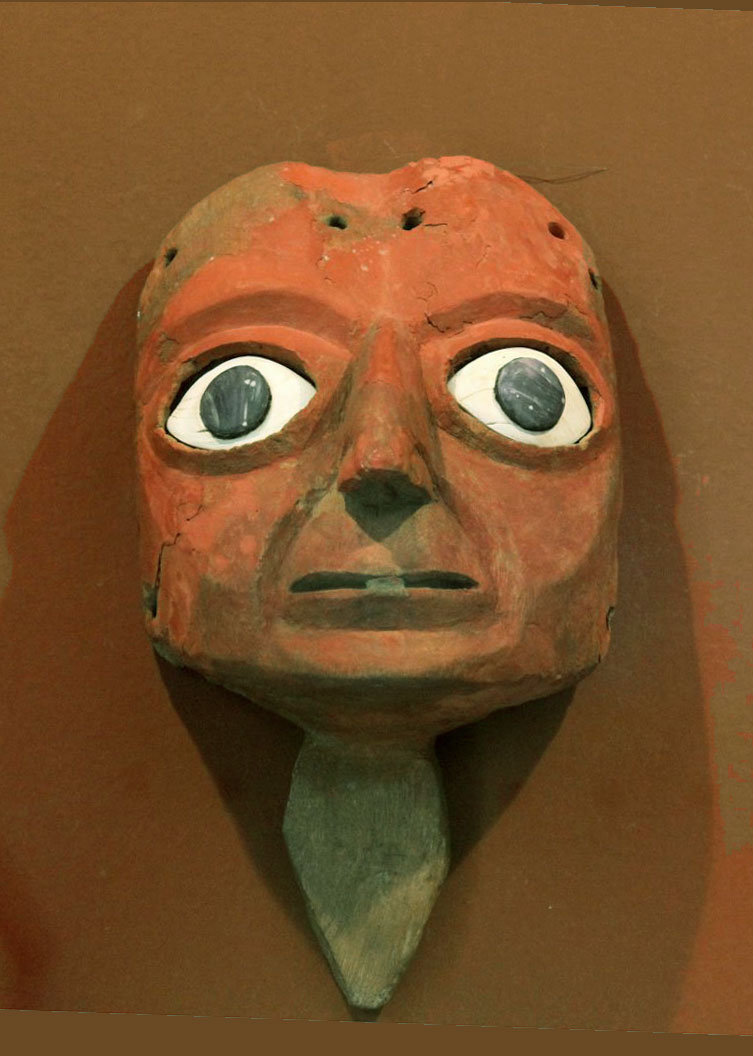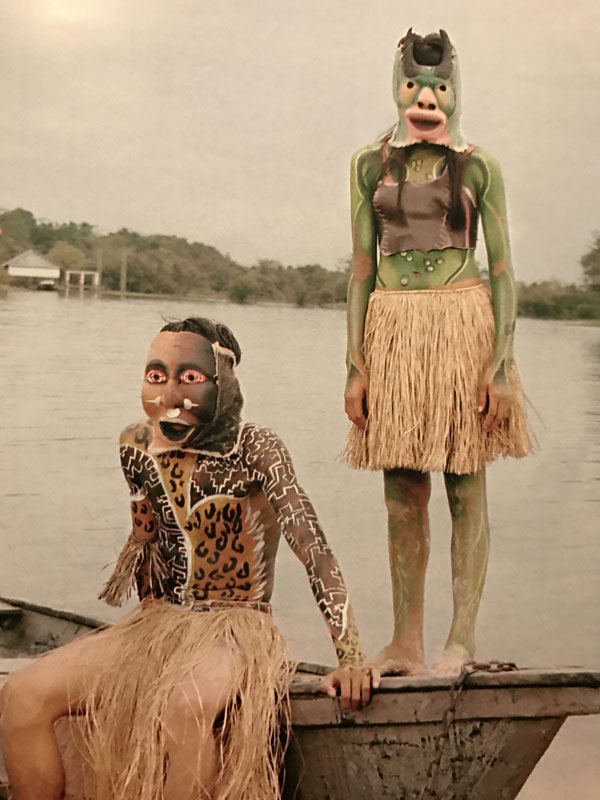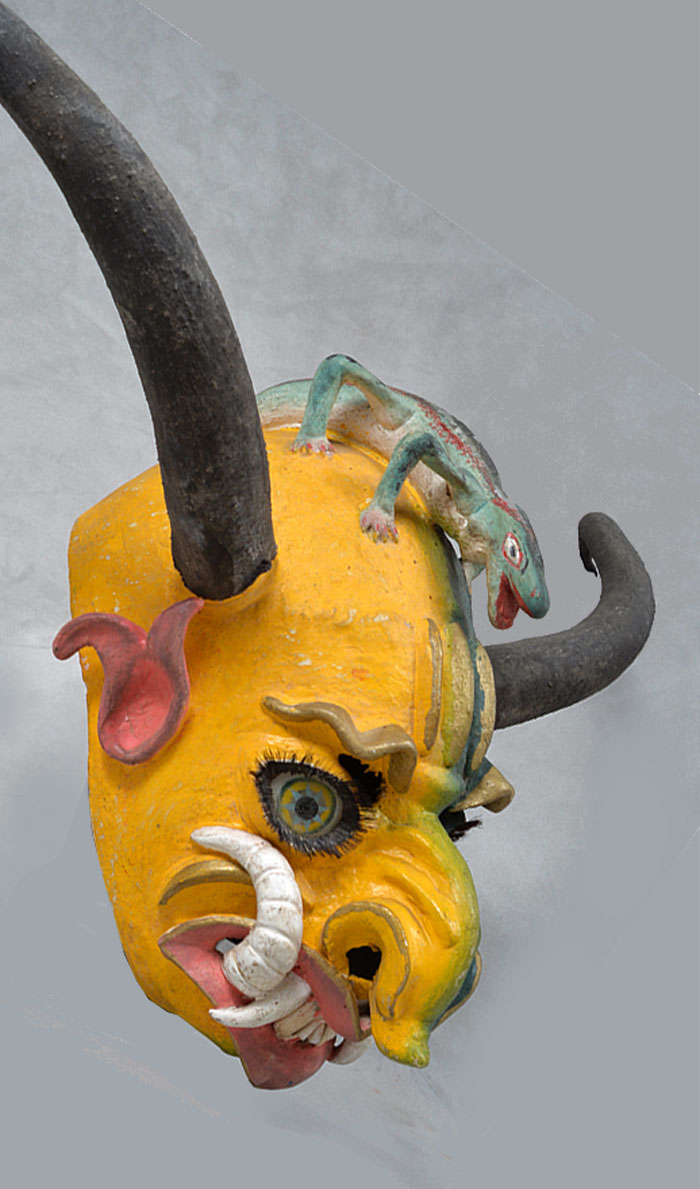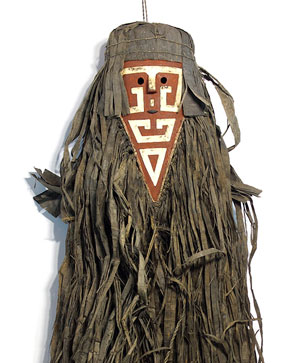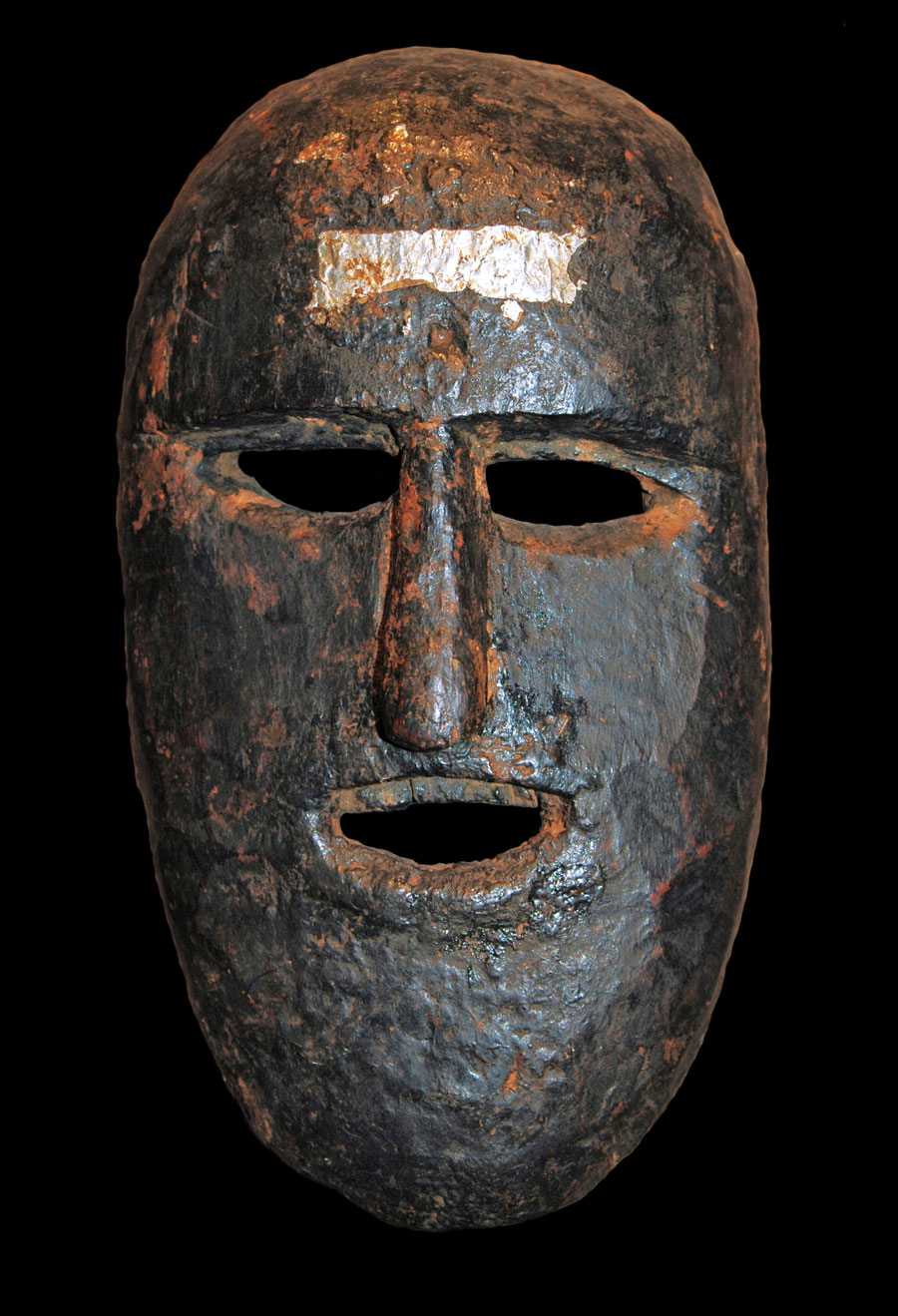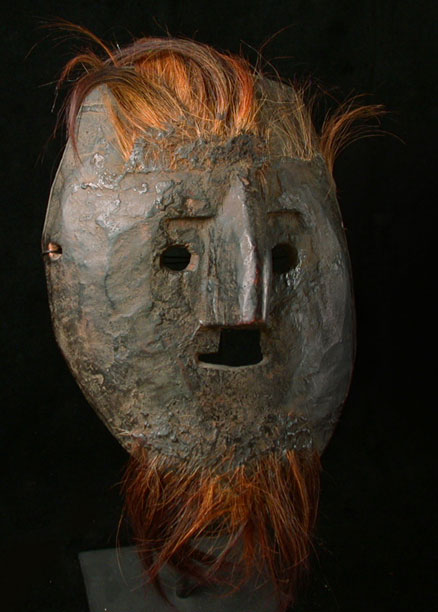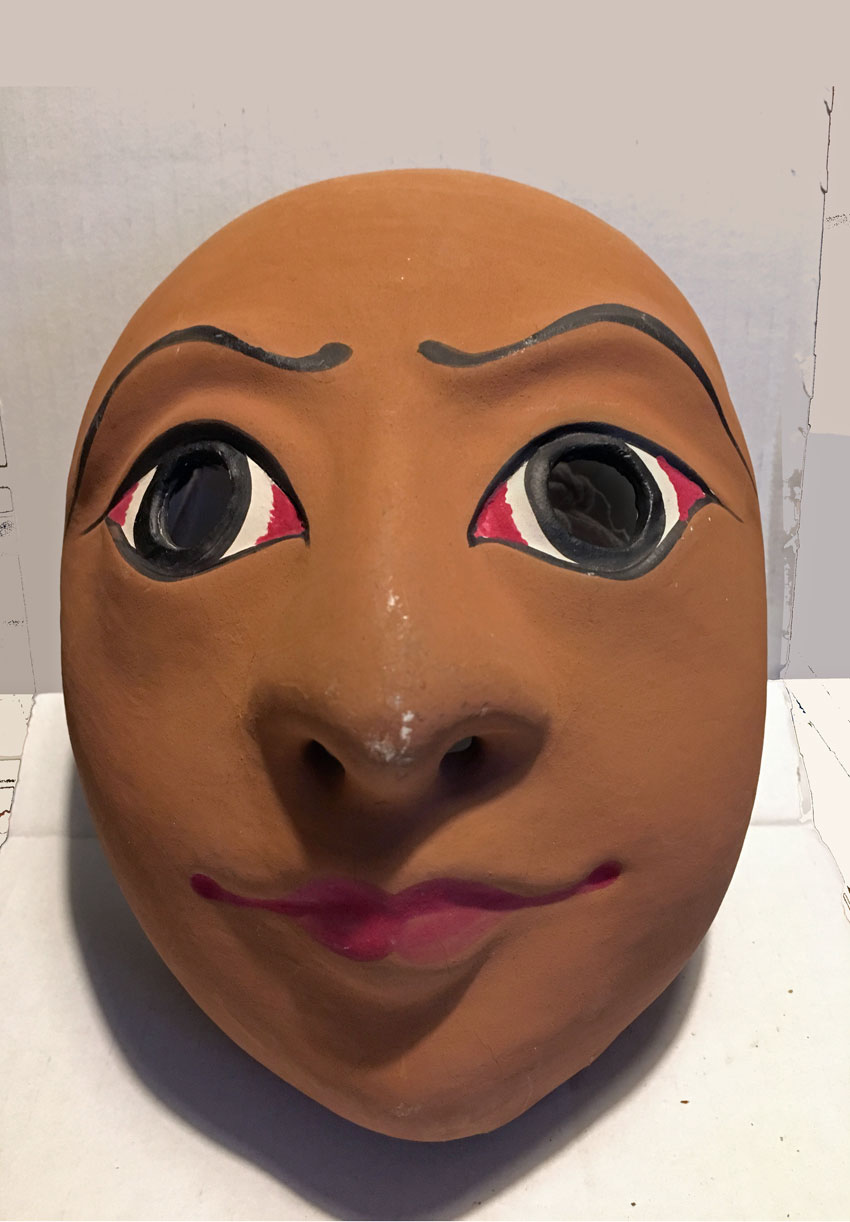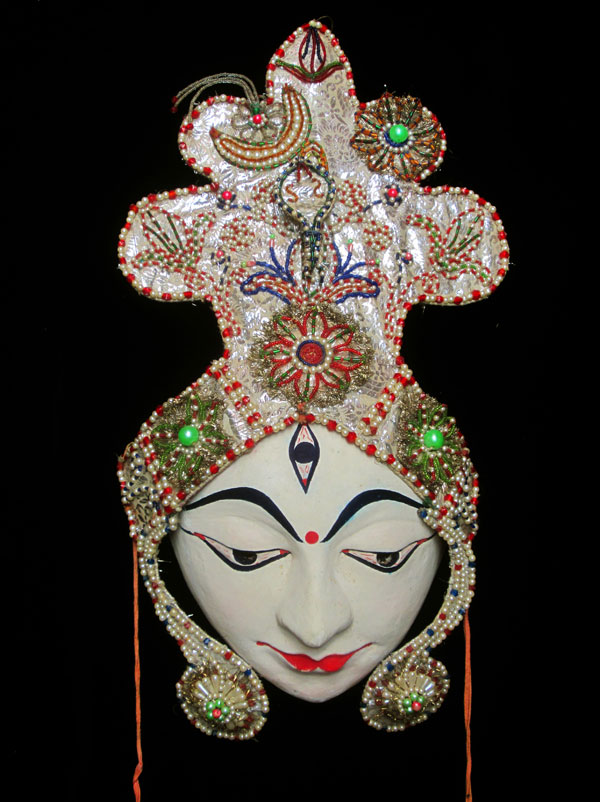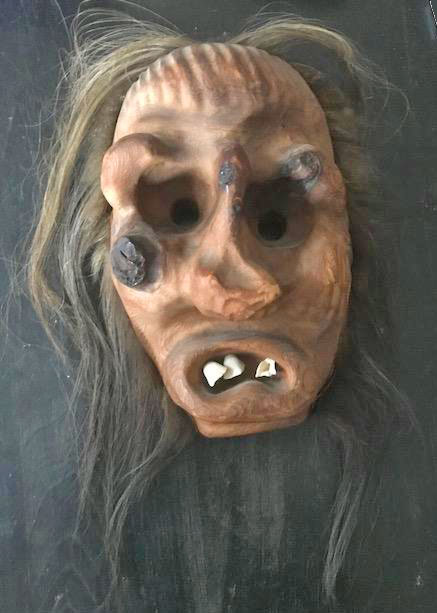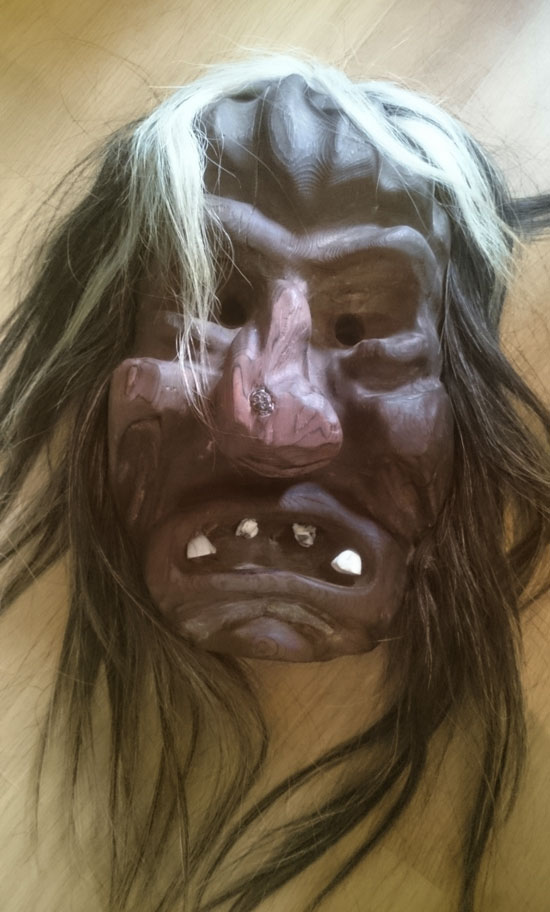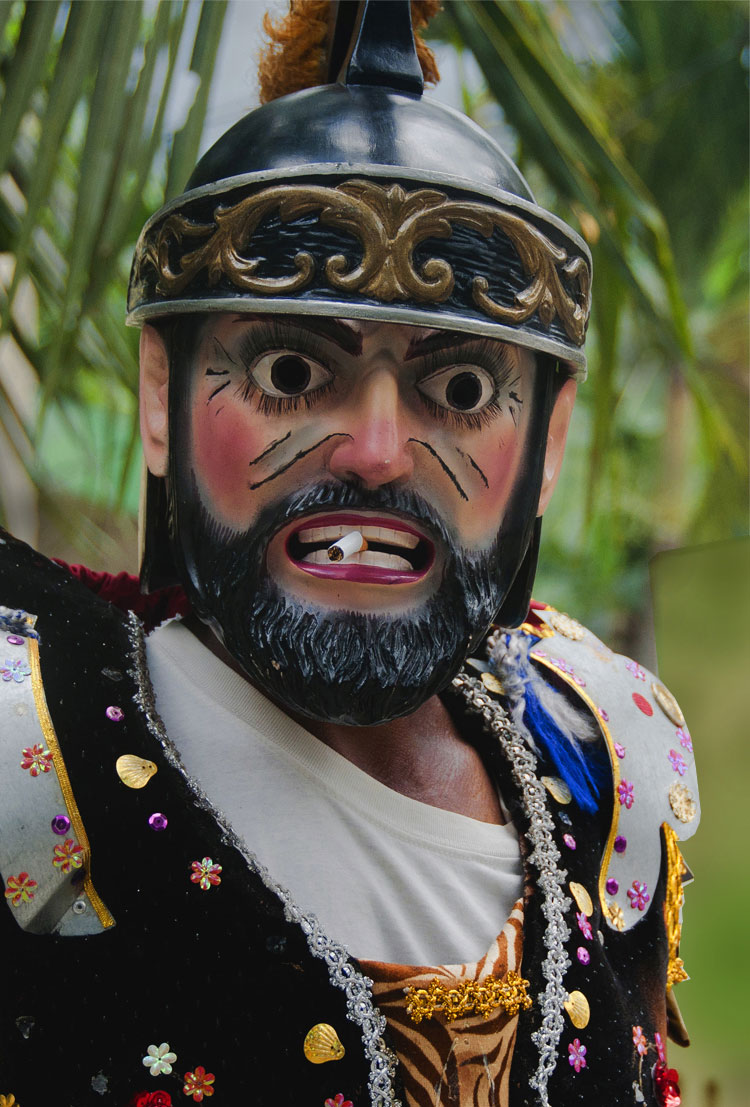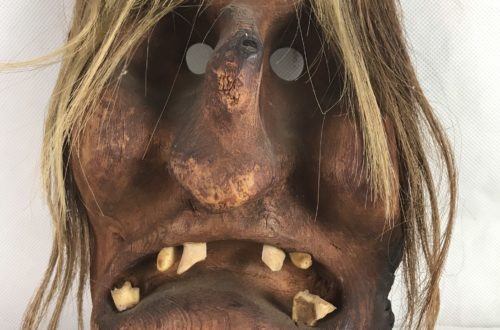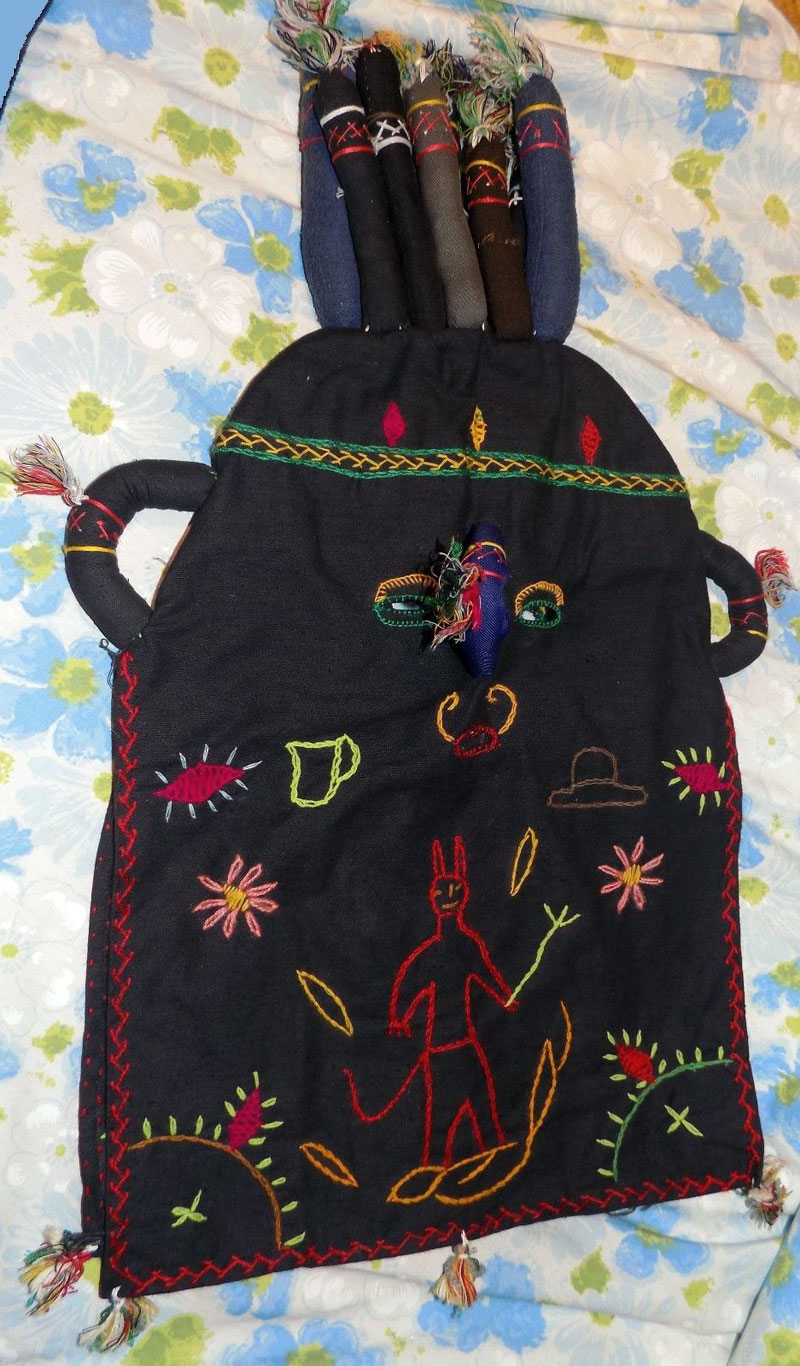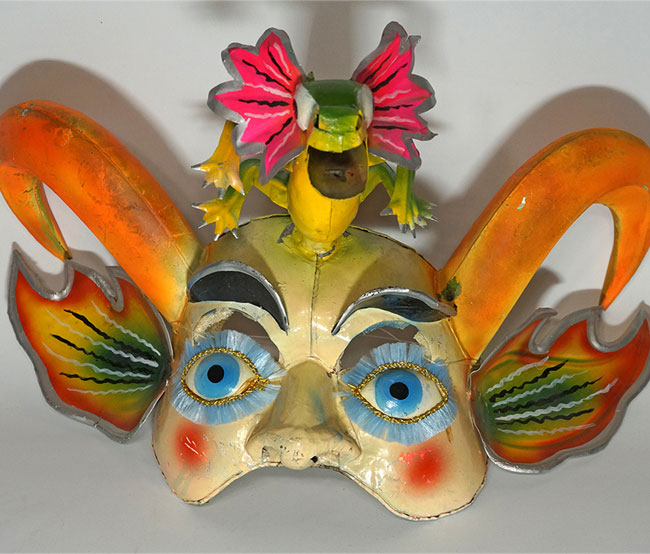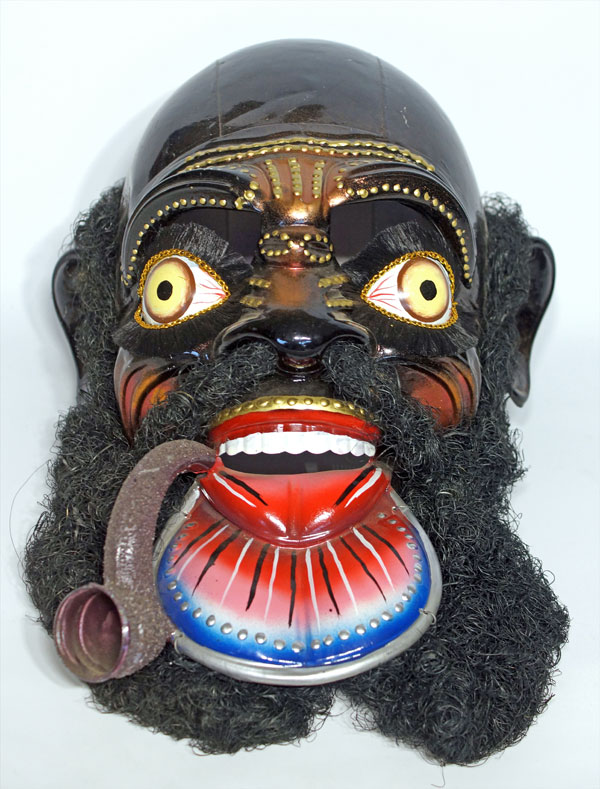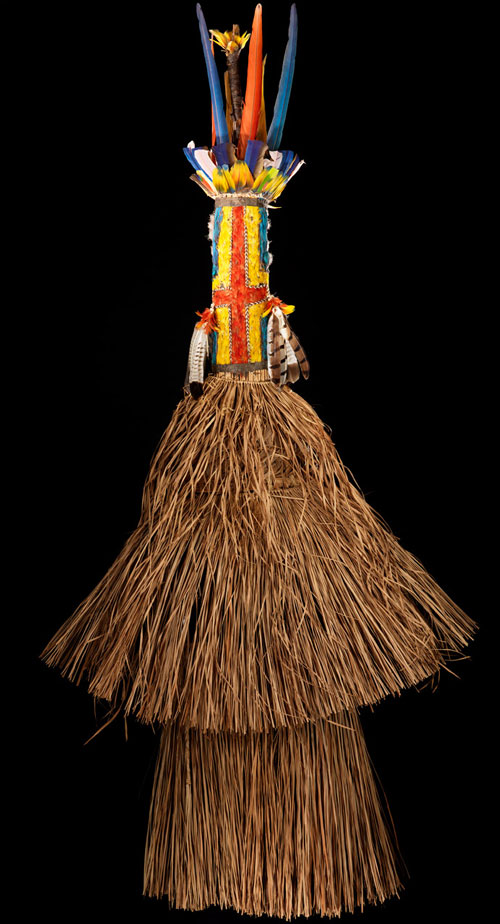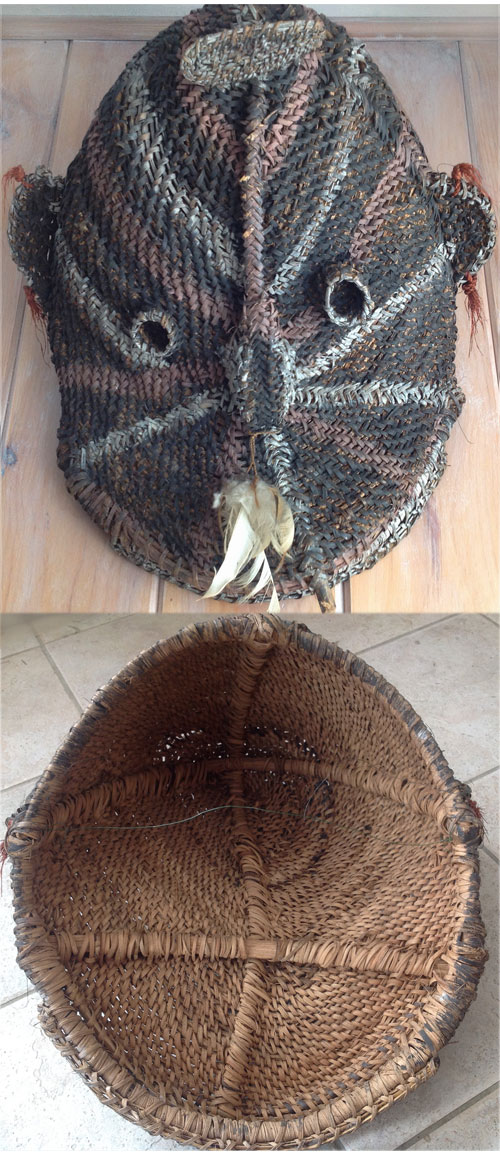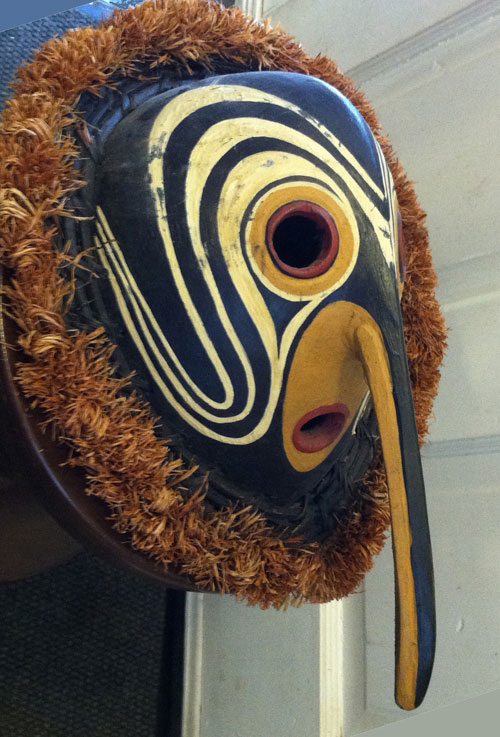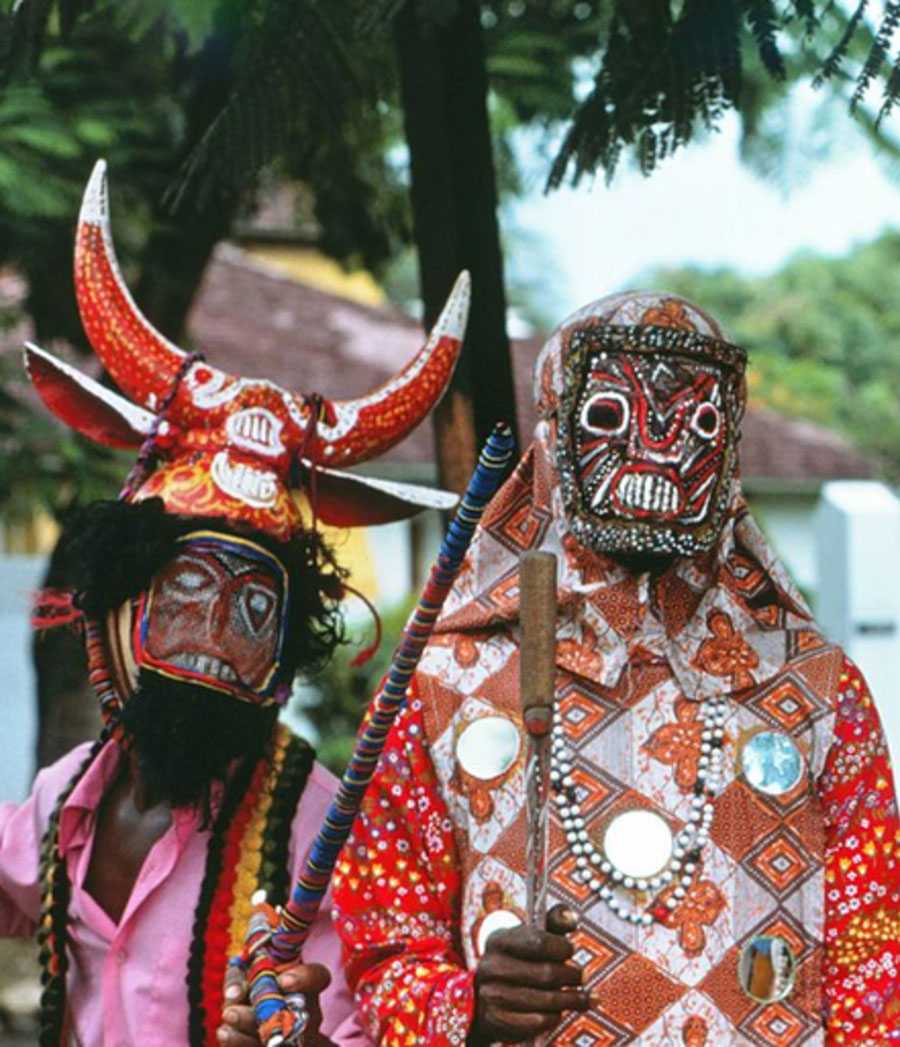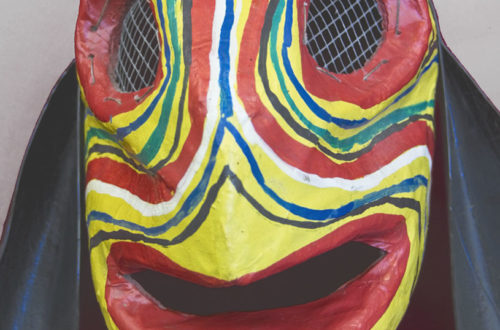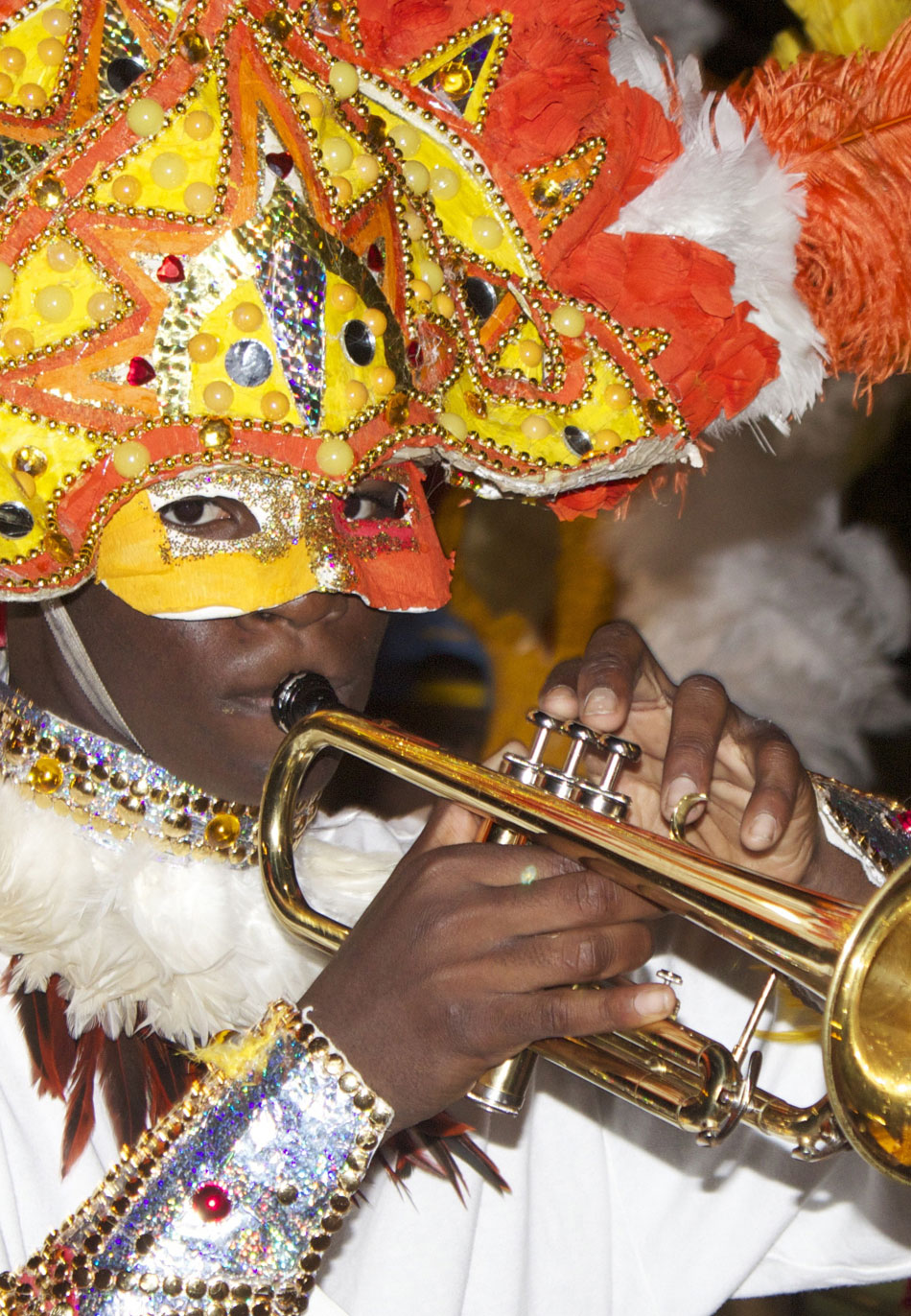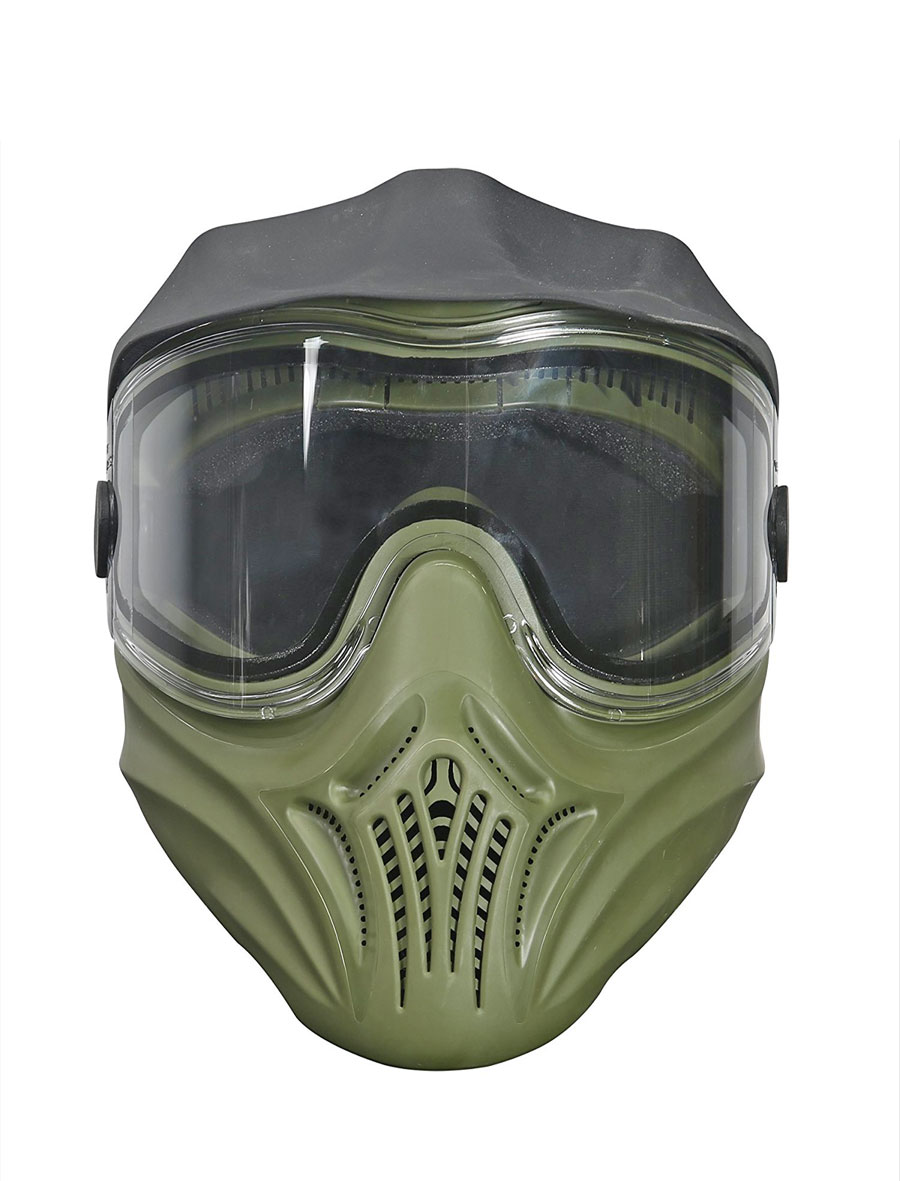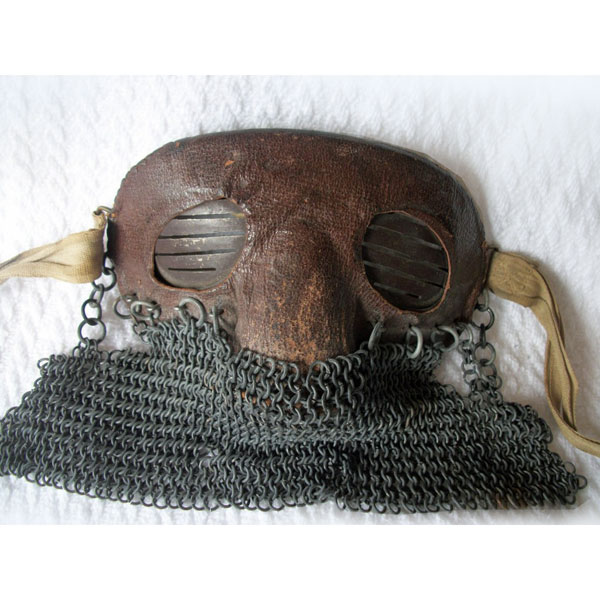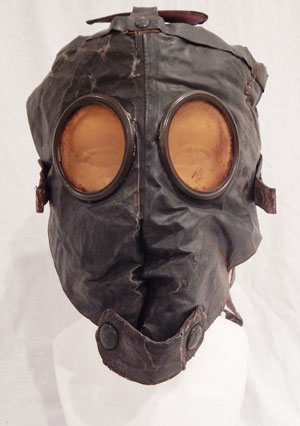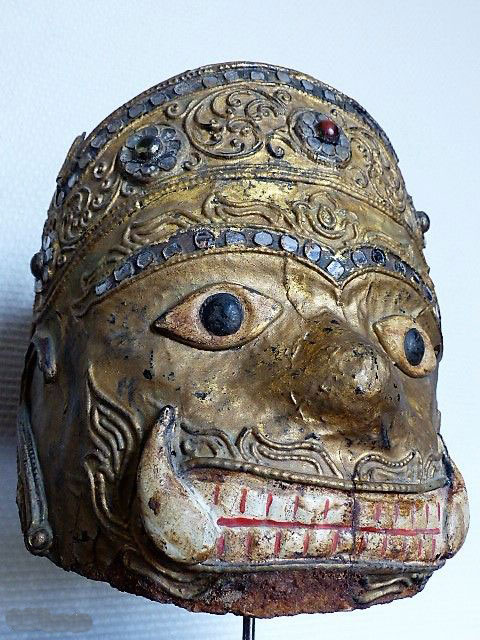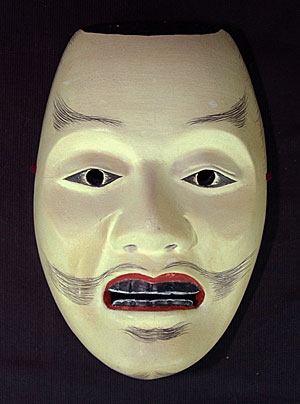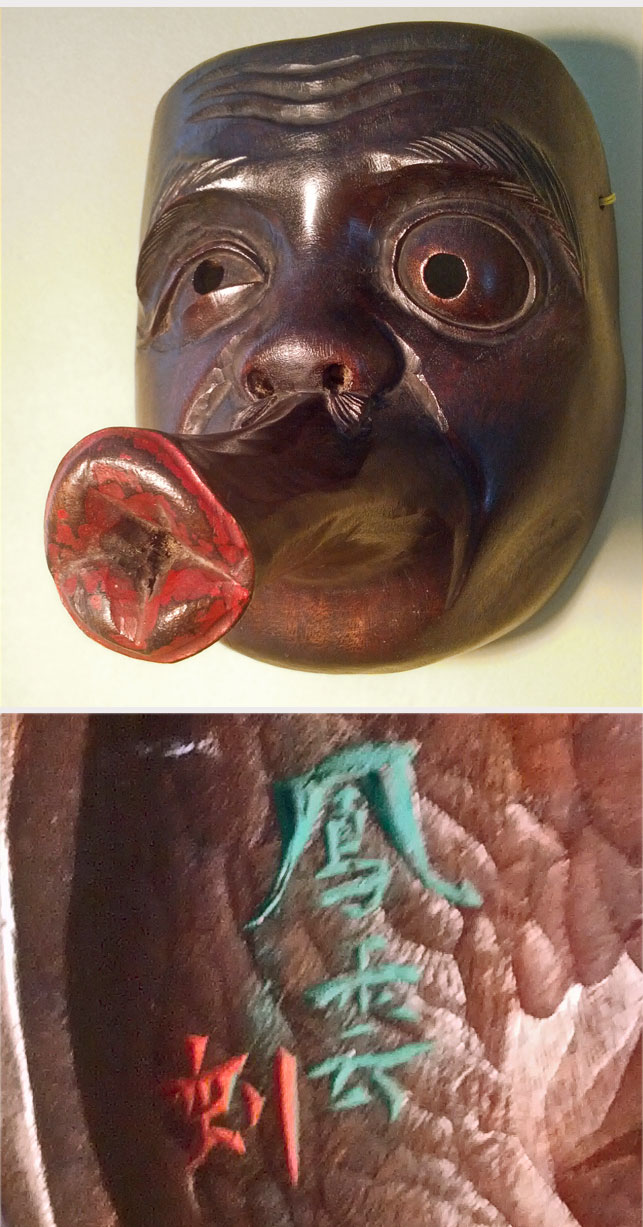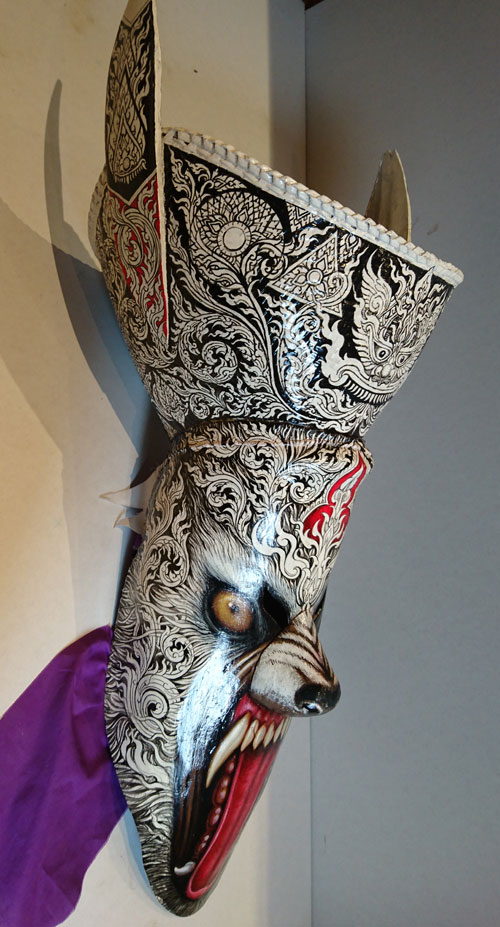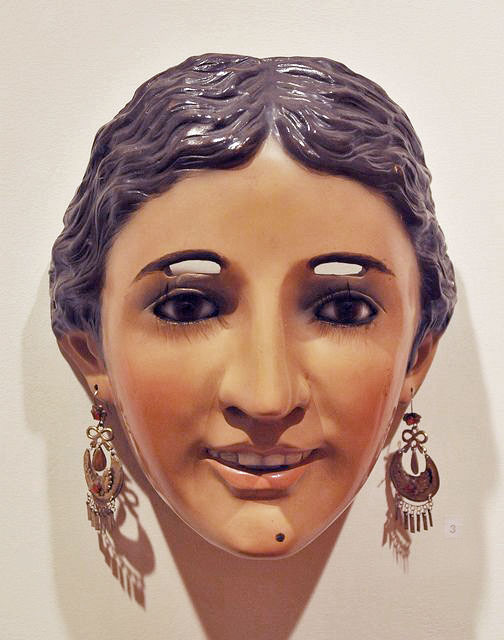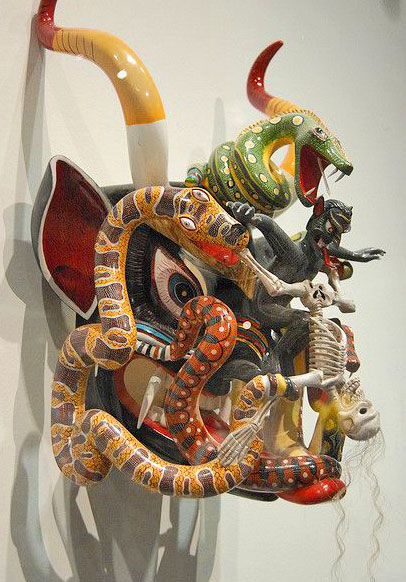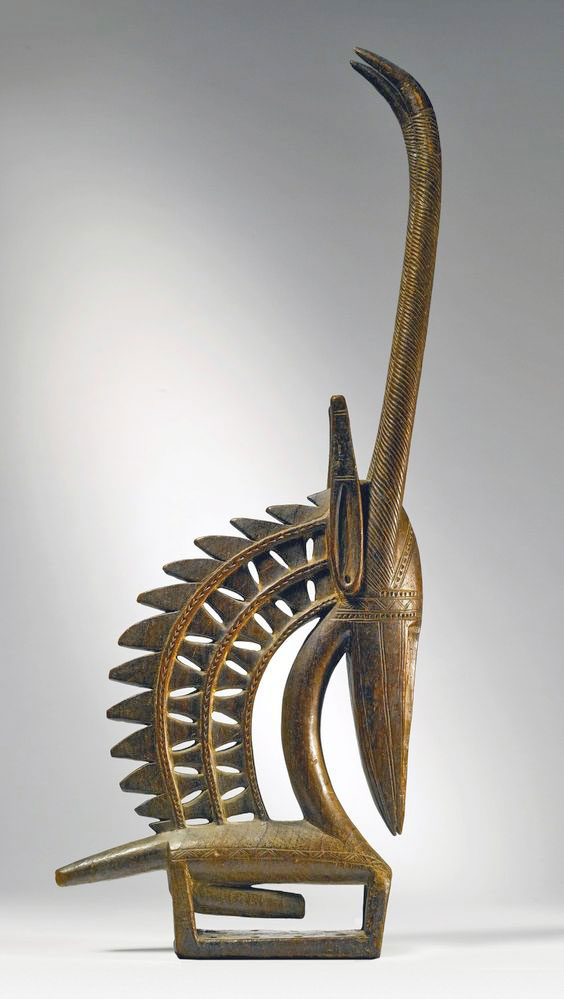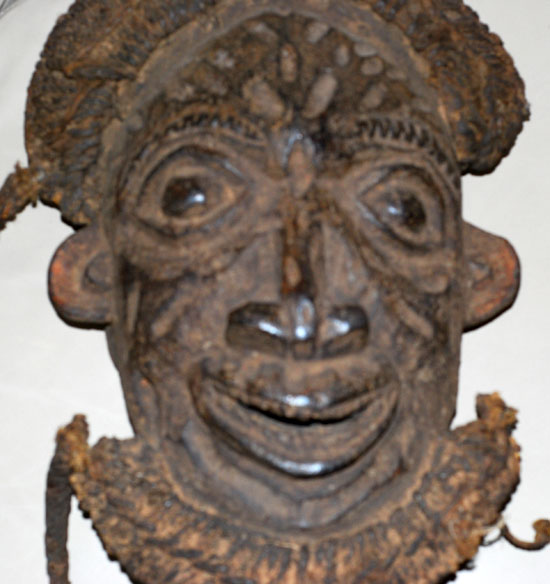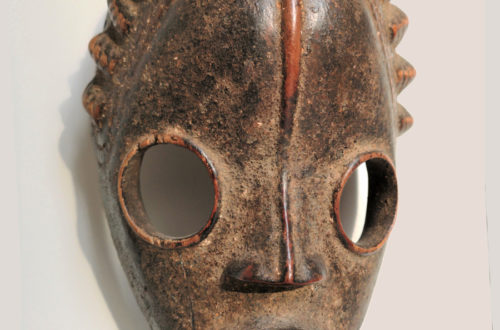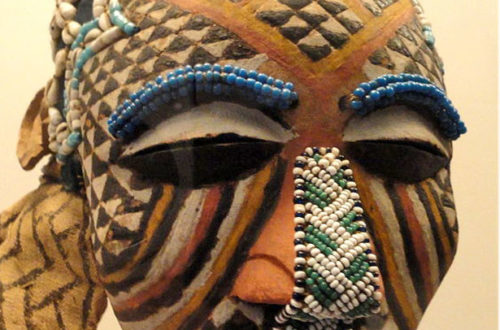This type of reddish burial mask was made about 700 AD. It would be from the Wari people. Masks from a mummy of this preColumbian culture in Peru are sometimes found in tombs around Lima’s Huaca Pucllana. The weather is very dry there and these old wooden masks hold up well. Their red color can be much brighter. The eyes are dark, flat stones on white shells. Like ancient Egypt, burial masks were used in upper-class funerals before the Spanish took over in South America and Mexico. Death masks are used by Christians as well.
-
-
Masks of the Himalayas
Masks from the middle highlands of Nepal, usually crude in design and dark with age, have always appealed to educated collectors. Though the masks look rough (almost ugly), they have an artistic power that can’t be denied. This picture, which I found on the internet, is typical. The only unusual thing is the metal foil stuck to the mask’s forehead. Think about the mix of Hinduism and Buddhism, and how these very poor people must make their own masks.
-
Tschaggatta mask from Swiss Alps
Q: I have had this mask in our family for a long time and recently started to do research on it as the misses no longer can stare at it on the wall. It seems to be a Swiss Made, LOTSCHENTALER HEIMARBEIT. That is what’s printed on the back. Seems to match up with some late 19th century masks that were/are worn at a festival in a Swiss Valley. Any idea as to what era and type of mask this is for sure? Is there any collectible market? Do they have estimated or average values? Sean, 1319 A: Called a Tschäggätta, this carved wooden mask of a frightening figure in…
-
Indian cloth mask from Ecuador
Q: What is this? Chris, 1318 A: It’s a cloth sack with another face on the back so the dancer can never be surprised by the Devil in the Inti Rymi ceremony. Not your typical mask. They’re used by the Quechua people who live in the Northern Andes of Ecuador. These are not as common as carved wood masks, but they are used even today. You can see one of these on page 161 of Masks of the World by Ibold and Yohn. Extras are sold to tourists… and for a reasonable price. A-
-
Yellow yam mask from PNG
Here we have a yam mask from the Abelam people of Maprik, East Sepik Province, Papua New Guinea. It is mid 20th century, but the wood carving and colorful natural pigments are still in good condition. It is 11.5 inches high. Yams are the most important crop in PNG. This design is a carved replica of a bird of paradise and it is very common for the yam ceremonies. There are woven yam masks that are much different. I found this yellow beauty at the Morgan Oakes Gallery.
-
4 Jamaican Jonkonnu dancers
John Canoe or Jonkonnu (pigeon English) has a very long tradition as a folk festival, incorporating both African and European forms. The Jonkonnu Festival is secular in nature and its performance at Christmas time is merely historical. From as early as the beginning of the 18th century masked and costumed performers have paraded the streets of Jamaica most often at Christmas time, but also at state functions, receiving money and food in return for their performances.These photos look very African to me.
-
Protective mask for paintball
Many sports, law enforcement and military use protective masks. They can be very scary to look at, which is done intentionally. Naturally, there are people who collect them. This one is for the sport called paintball where teams shoot at each other with powerful airguns and rubber ball ammunition. No one is supposed to get hurt in the face. This is called an Invert Helix Thermal Paintball Mask and it looks better when used because the little cap covers all of the head. You can easily buy a new one for $30.
-
Old khon mask
Q: I’ve just found this mask. It looks like a khon mask but from where? Burma or India? Have you some idea about this? Eric, 1314 A: I’ve never seen a kohn mask from either Burma or India, so I assume it is an old example from Thailand. Sometimes they are danced, but they are also displayed in holy places. Life sized, it is made from layers of papier-mache and plaster. Gold leaf and colored glass and jewels are applied along with some paint. Because of its age I think you should do more research. This might be of interest to serious collectors. A
-
Maranquilla mask for Carnaval
This high quality mask of a woman belongs to the Ruth Lechuga collection. You can also see it on page 37 of her famous book, Mask Arts of Mexico. It is a carnival mask from Papalotla,Tlaxcala, Mexico. The maker, Enrique Mendez Juarez, is a well trained professional santero who also carves statues for churches. His masks cost more than most Mexicans can afford. Carefully carved out of wood and painted, the eyes are glass surrounded with false eyelashes.
-
Expensive and cheap Chi Waras
Bamana carved wooden Chi Wara headdress features an abstract motif of a male antelope. There is also a female version that looks much different. The first photo shows an expensive version of the male from Sotheby’s with very fine carving. The second Chi Wara is much more quickly made and for some reason doesn’t have a penis. Both come from Mali and are handsome in design. You can get the cheaper one for less than $300 on eBay. Please enlarge the two photos and you can easily see why the first Chi Wara would get an A, and the other one a B on our value code.
